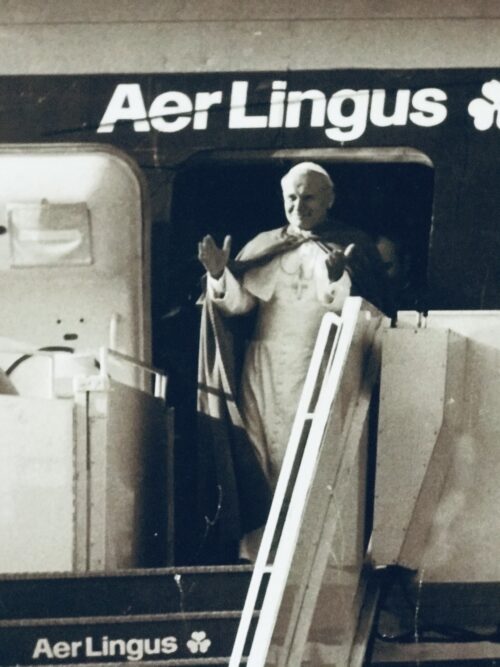
Aran Islands: on the road to Synge’s Chair, on Inishmaan. Photograph: Andy Haslam/New York Times
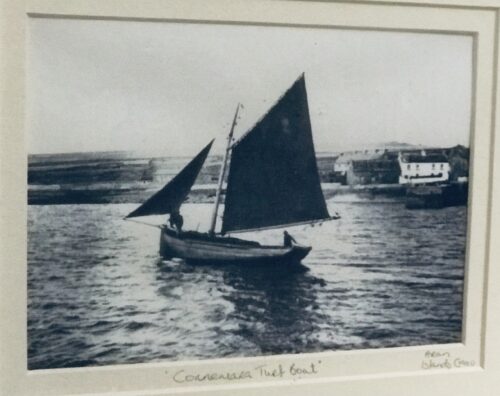
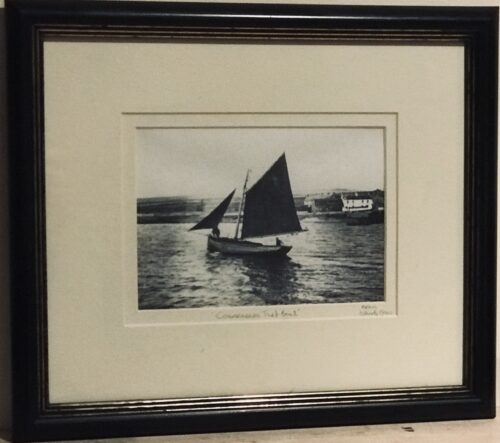

Aran Islands: on the road to Synge’s Chair, on Inishmaan. Photograph: Andy Haslam/New York Times
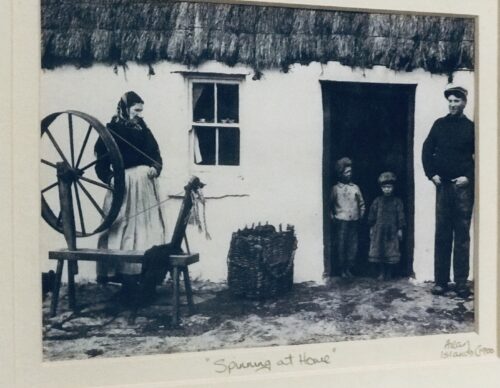
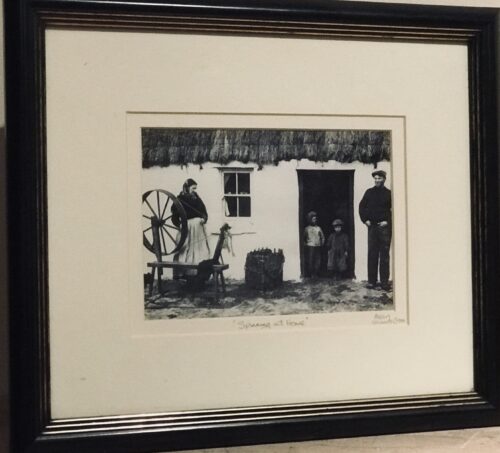

Aran Islands: on the road to Synge’s Chair, on Inishmaan. Photograph: Andy Haslam/New York Times
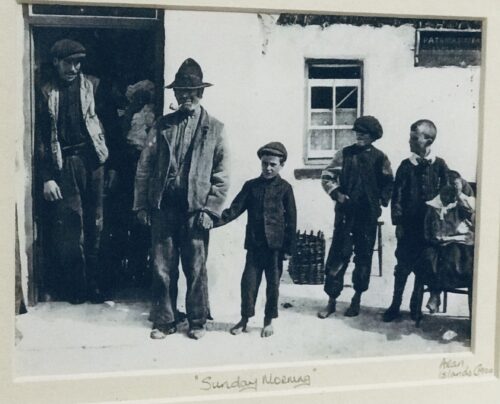
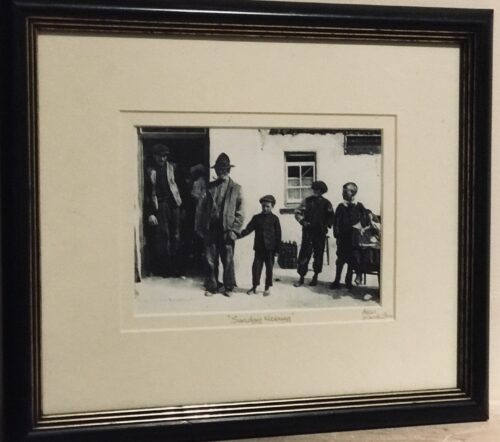

Aran Islands: on the road to Synge’s Chair, on Inishmaan. Photograph: Andy Haslam/New York Times
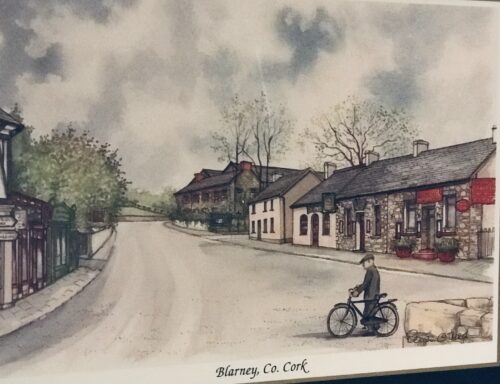
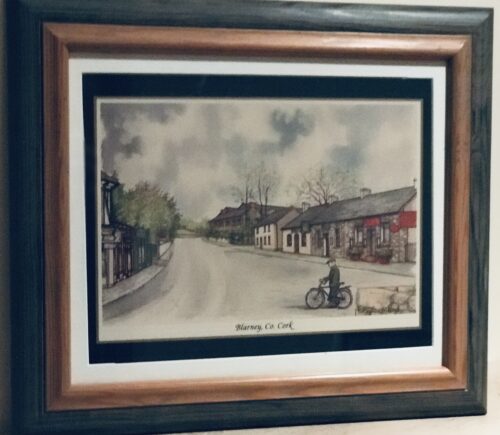


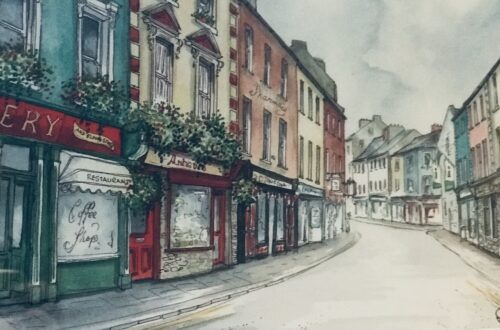

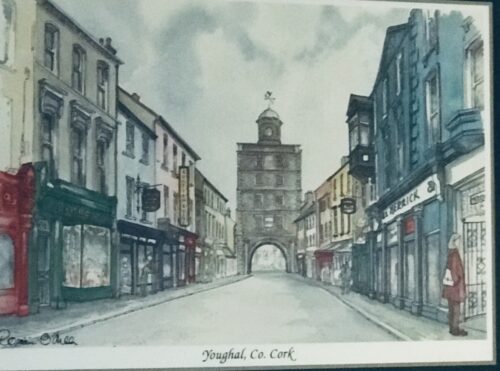
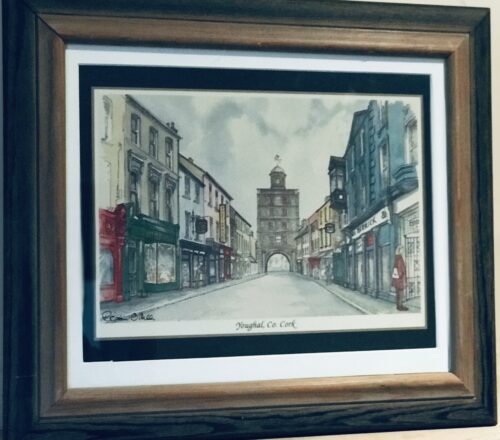
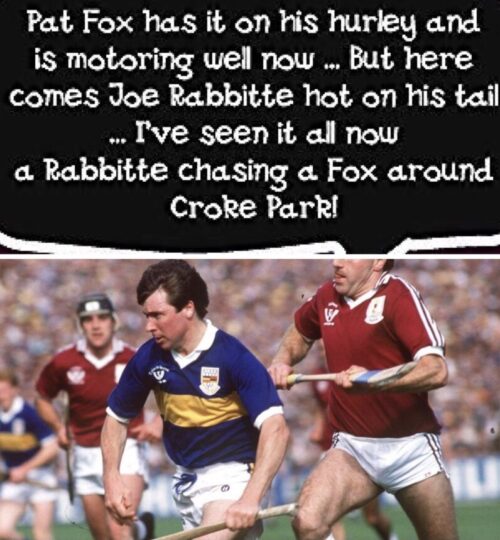

'Twas a new game to me. But I knew one person. He was in goal for UCD and his name was Tadhg Hurley. He went to school in Dingle and he had hurling because his father was a bank manager and had spent time in Tipperary or Cork. The moment my minute started, he was saving a fantastic shot. And he cleared it away out, I can still see it, out over the sideline, Cusack Stand side of the field, eighty yards out. But it was deflected out by a member of the opposition. The adjudicators couldn't see that that didn't happen. Who was called out to take the line-ball? The only person I knew, Tadhg Hurley. And he took a beautiful line-ball - Christy Ring never took better. He landed it down in front of the Railway goal, there was a dreadful foul on the full-forward, and there was a penalty. And who was called up to take the penalty? Tadhg Hurley. 'Twas the best individual display ever seen in Croke Park. It took him at least a minute to come from the Canal goal up. And while he was coming up I spoke about his brother Bob, who was in Donal's class, and his sister who used to come out to Dún Síon strand during the summer. So eventually he took the penalty. I've seen DJ Carey, I've seen Nicky Rackard, I've seen Christy Ring. None of them could ever equal the display he gave that day... Sin mar a thosaigh sé!Ó Muircheartaigh was the one selected and his first assignment was to provide an all-Irish commentary on the 1949 Railway Cup final on St. Patrick's Day. He graduated from St. Patrick's College a little later and also completed a Bachelor of Arts degree from University College Dublin. He taught economics, accountancy and Irish in both primary and secondary schools throughout Dublin, the majority of which were run by the Christian Brothers. He continued teaching up until the 1980s, when he became a full-time broadcaster with Raidió Teilifís Éireann. For the early part of his broadcasting career Ó Muircheartaigh commentated on Minor GAA matches, in the Irish language. He also replaced the legendary Micheál O'Hehir when he was not available to commentate. Eventually when O'Hehir was forced to retire in the mid-1980s Ó Muircheartaigh took over as the station's premier radio commentator. He developed his own inimitable style of commentary and his accent is unmistakably that of a native Irish speaker. He is a true lover of Gaelic Athletic Association and it is reflected in the enthusiasm he brings to matches. His unusual turn of phrase has made him a much loved broadcaster and often imitated character. He has become particularly famous in Ireland for his unusual turns of phrase in the heat of the moment while commentating. Today he commentates on RTÉ Radio 1. In 2004 he published his autobiography, 'From Dún Sion to Croke Park'. Ó Muircheartaigh's commentaries for RTÉ Radio 1's Sunday Sport show won him a Jacob's Award in 1992. He was also the Parade Grand Marshal for the 2007 St. Patrick's Festival, having been given the honour by the chairman of the Festival in recognition and appreciation of his unique contribution to Irish culture. He will be the Parade Grand Marshal for the 2011 St. Patrick's Parade in Toronto, Ontario, Canada, also in recognition and appreciation of his unique contribution to Irish culture. On 16 September 2010 he announced his retirement from broadcasting. The last All-Ireland he commentated on was the 2010 All-Ireland Senior Football Championship Final on 19 September 2010.On 29 October 2010 it was announced that the 2nd International Rules test at Croke Park would be Ó Muircheartaigh's final broadcast as commentator on RTÉ Radio 1. On 30 October 2010 Micheál commentated his final commentary alongside RTÉ's pundit and former Meath footballer Bernard Flynn. He is contracted to officiate at the 2011–12 Volvo Ocean Race finish in Galway when he will commentate on the finish to the round the world race, to give it a uniquely Irish conclusion. Sailing has been a long time hobby of O Muircheartaigh. Ó Muircheartaigh writes a weekly sports column for Foinse, the Irish-language newspaper free with the Irish Independent each Wednesday. Ó Muircheartaigh was invited to read out a piece in Irish and in English at an event called "Laochra" in Croke Park on 24 April 2016 to commemorate the 100th anniversary of the Easter Rising.
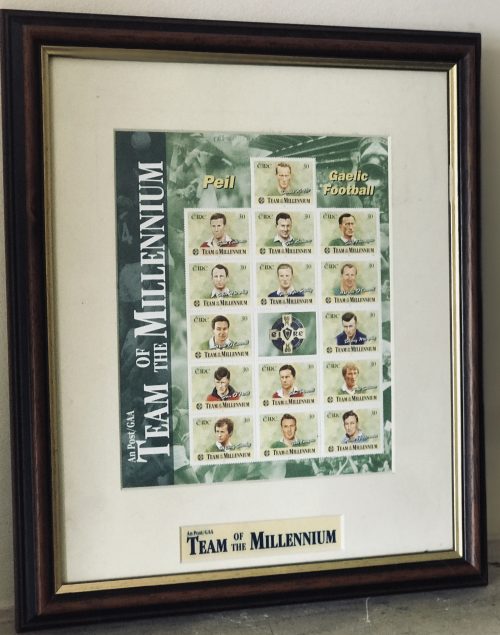
"The An Post-GAA Team of the Millennium was unveiled at Croke Park yesterday. The selection which serves as the first 15 inductions into the GAA's new Hall of Fame has also been marked by an issue of 15 commemorative stamps by An Post. The stamps will be available in a variety of combinations from today. Next year, a similar exercise will take place to honour 15 hurlers.
There was some comment on the absence of Dublin's Brian Mullins and Jack O'Shea from Kerry but it seemed generally appreciated that there were only two centrefield slots on the team and someone had to lose out. Tommy Murphy, the Boy Wonder of the 1930s Laois team which won three Leinster titles in a row, who was included ahead of Mullins and O'Shea had the added distinction of being the only player honoured who had not won an All-Ireland medal.
Not surprisingly, Kerry - who top the All-Ireland roll of honour with 31 titles - lead the way on the team with six selections. Despite being clearly second behind Kerry with 22 All-Irelands, Dublin provide only one player, Kevin Heffernan at left corner forward. Galway and Mayo have two players each with one from Cavan, Down, Meath and Laois making up the balance.
Joe McDonagh, President of the GAA, described the project as a reflection "on the history and evolution of our association, its games and its central characters, the players who have left such giant footprints in the sands that is the chronicle of the GAA".
The Hall of Fame which is inaugurated by this team will be represented all through Croke Park, according the GAA director general Liam Mulvihill. He said that the Hall will be added to with a small number of inductions on an annual basis.
"We decided that this team would be the initial members of the Hall of Fame and we were planning to honour those selected around the main areas of the concourse of the re-developed stadium, in the bottom tier and the upper tier. We wanted those ordinary tiers where ordinary supporters gather as the most appropriate place to honour those players.
"The inductions will be in very small numbers, we're probably talking about two a year. Two footballers, two hurlers or one footballer and one hurler. It has to be made very, very special."
Paddy Downey, formerly GAA correspondent of The Irish Times, was one of the adjudicators and confirmed the widespread feeling that the task of selecting such a team wasn't an enviable one.
"It's nearly impossible because there's so many players, particularly in what you might call the big, central positions: midfield, centre-back, full back. Already people are saying to me: `why isn't Brian Mullins on, why isn't Paddy Kennedy of Kerry, Jack O'Shea - above all at the present time' and so on.
"We also had the problem of not picking a half-century team of people we had seen ourselves. You could also argue how could we pick someone we hadn't seen - Dick Fitzgerald, apparently one of the greatest players of all time, Paul Russell of Kerry, Jack Higgins of Kildare, from the earlier part of the century.
"I was conscious that we could have gone further back and taken the word of our predecessors in journalism who had praised these players and done so in print. Inevitably it came to be more a team of the second half of the century than the early years."
Martin O'Connell of Meath was the only player of what might roughly be called contemporary times - one whose career was largely after the selection of the 1984 Centenary Team - to earn a place.
"I was surprised," he said. "I didn't even know until I came up here. I arrived a bit late and Micheal O Muircheartaigh was just reading out the names. I was absolutely delighted."

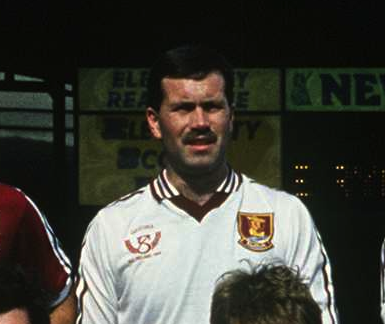 Source: Billy Stickland/INPHO
2. Sylvie Linnane (Gort)
Linnane was a teak tough corner back who took no prisoners.
A farmer who also hires out machinery, Linnane has dabbled in coaching and retains very strong links with his home club, Gort.
Sylvie’s three sons, Sylvie Óg, Tadhg and Darragh, won Galway senior club hurling medals with Gort last year.
Source: Billy Stickland/INPHO
2. Sylvie Linnane (Gort)
Linnane was a teak tough corner back who took no prisoners.
A farmer who also hires out machinery, Linnane has dabbled in coaching and retains very strong links with his home club, Gort.
Sylvie’s three sons, Sylvie Óg, Tadhg and Darragh, won Galway senior club hurling medals with Gort last year.
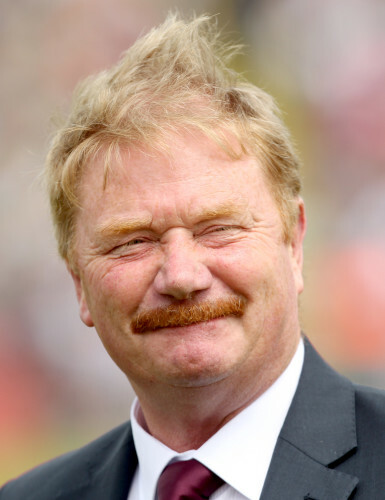 Source: James Crombie/INPHO
3. Conor Hayes (Kiltormer)
Hayes is the last Galway man to lift the Liam MacCarthy Cup on Galway’s behalf.
The Kiltmorer man was skipper of the 1987 and 1988 All-Ireland winning teams and was manager in 2005 when Galway lost the final to Cork.
He strongly believes that the Tribesmen can end a 27-year famine and shared his views with The42 in this piece.
Source: James Crombie/INPHO
3. Conor Hayes (Kiltormer)
Hayes is the last Galway man to lift the Liam MacCarthy Cup on Galway’s behalf.
The Kiltmorer man was skipper of the 1987 and 1988 All-Ireland winning teams and was manager in 2005 when Galway lost the final to Cork.
He strongly believes that the Tribesmen can end a 27-year famine and shared his views with The42 in this piece.
 Source: James Crombie/INPHO
4. Ollie Kilkenny (Kiltormer)
Kilkenny was a key member of the successful Kiltormer teams of the 1980s and 1990s, and won two All-Ireland senior medals with Galway in 1987 and 1988.
A psychiatric nurse by profession, Kilkenny formed one-third of a revered full-back line alongside clubmate Conor Hayes and Sylvie Linnane.
Ollie’s sons Jason and Keith won Nicky Rackard Cup medals with Roscommon this year.
Source: James Crombie/INPHO
4. Ollie Kilkenny (Kiltormer)
Kilkenny was a key member of the successful Kiltormer teams of the 1980s and 1990s, and won two All-Ireland senior medals with Galway in 1987 and 1988.
A psychiatric nurse by profession, Kilkenny formed one-third of a revered full-back line alongside clubmate Conor Hayes and Sylvie Linnane.
Ollie’s sons Jason and Keith won Nicky Rackard Cup medals with Roscommon this year.
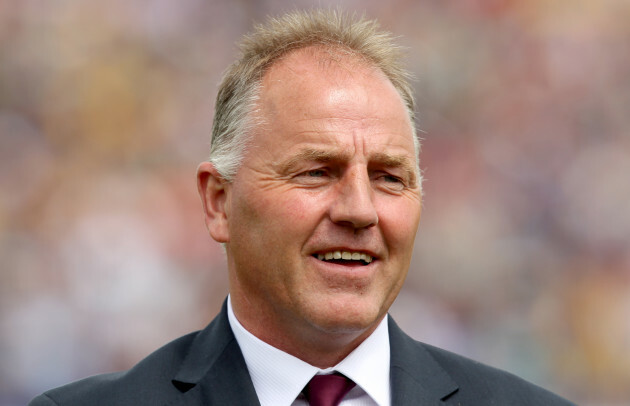 Source: James Crombie/INPHO
5. Peter Finnerty (Mullagh)
Part of one of the most revered half-back lines of all time, Finnerty went on to become a hurling analyst with RTÉ on The Sunday Game.
Involved in the Supermac’s franchise in Tuam, Finnerty was coach of the Mayo hurlers from 2007-2010.
On the eve of Sunday’s final, Finnerty will host a Bord Gáis Energy Legends Tour at Croke Park.
Source: James Crombie/INPHO
5. Peter Finnerty (Mullagh)
Part of one of the most revered half-back lines of all time, Finnerty went on to become a hurling analyst with RTÉ on The Sunday Game.
Involved in the Supermac’s franchise in Tuam, Finnerty was coach of the Mayo hurlers from 2007-2010.
On the eve of Sunday’s final, Finnerty will host a Bord Gáis Energy Legends Tour at Croke Park.
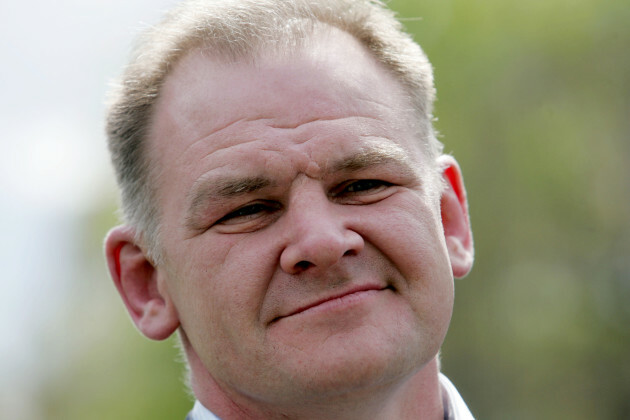 Source: James Crombie/INPHO
6. Tony Keady (Killimordaly)
Keady was a member of the Galway U21 backroom team this year, working alongside boss Johnny Kelly.
Currently caretaker at Calasanctius College in Oranmore, Keady coached the school to a first ever senior B title this year.
In 1989, the build-up to the All-Ireland semi-final against Tipperary was overshadowed by the ‘Tony Keady affair’, when the majestic centre back was suspended.
Source: James Crombie/INPHO
6. Tony Keady (Killimordaly)
Keady was a member of the Galway U21 backroom team this year, working alongside boss Johnny Kelly.
Currently caretaker at Calasanctius College in Oranmore, Keady coached the school to a first ever senior B title this year.
In 1989, the build-up to the All-Ireland semi-final against Tipperary was overshadowed by the ‘Tony Keady affair’, when the majestic centre back was suspended.
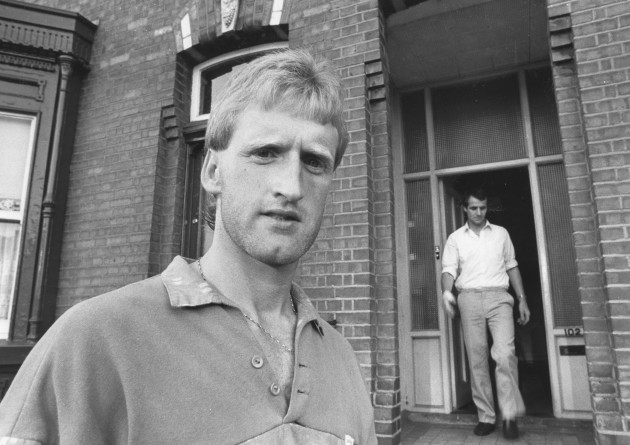 Source: Billy Stickland/INPHO
7. Gerry McInerney (Kinvara)
The man with the famous white boots now runs a sports shop in Oranmore.
McInerney is still involved in farming and his son, Gearóid, is a member of the Galway senior panel preparing for Sunday’s final.
Gearóid made his first championship start against Dublin in the drawn Leinster championship match at Croke Park this year.
Gerry played in a Galway senior hurling final for Kinvara as recently as 2007, when he was 42 years of age.
Source: Billy Stickland/INPHO
7. Gerry McInerney (Kinvara)
The man with the famous white boots now runs a sports shop in Oranmore.
McInerney is still involved in farming and his son, Gearóid, is a member of the Galway senior panel preparing for Sunday’s final.
Gearóid made his first championship start against Dublin in the drawn Leinster championship match at Croke Park this year.
Gerry played in a Galway senior hurling final for Kinvara as recently as 2007, when he was 42 years of age.
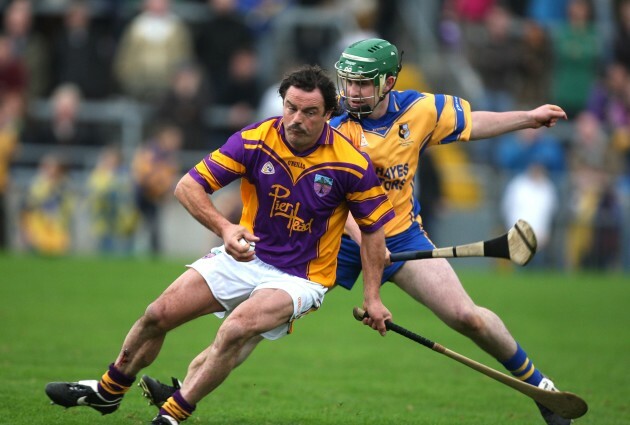 Source: Morgan Treacy/INPHO
8. Michael Coleman (Abbeyknockmoy)
Midfielder Coleman was involved in finance and qualified as a teacher.
Heavily involved in the juvenile ranks at Abbeyknockmoy, Coleman was the club’s hurling board delegate and manager of the U15 and U16 teams this year.
Michael was also the coach to the Leitrim senior hurlers in 2015 and his son, Dara, has been earmarked as one to watch in future years.
Source: Morgan Treacy/INPHO
8. Michael Coleman (Abbeyknockmoy)
Midfielder Coleman was involved in finance and qualified as a teacher.
Heavily involved in the juvenile ranks at Abbeyknockmoy, Coleman was the club’s hurling board delegate and manager of the U15 and U16 teams this year.
Michael was also the coach to the Leitrim senior hurlers in 2015 and his son, Dara, has been earmarked as one to watch in future years.
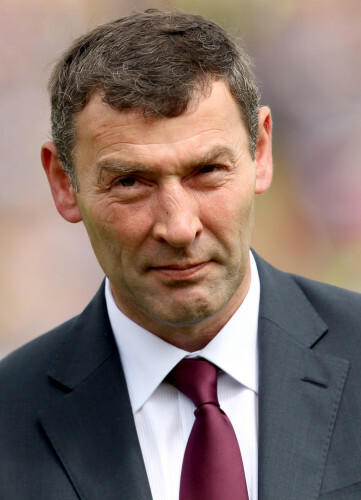 Source: James Crombie/INPHO
9. Pat Malone (Oranmore-Maree)
Malone won All-Ireland medals in 1987 and 1988 and went on to become an Allstar in 1993.
A key member of Anthony Cunningham’s Galway senior backroom team, Malone is also involved with his home club Oranmore-Maree.
Coleman’s son, Ross, is a member of the Galway minor hurling panel.
Source: James Crombie/INPHO
9. Pat Malone (Oranmore-Maree)
Malone won All-Ireland medals in 1987 and 1988 and went on to become an Allstar in 1993.
A key member of Anthony Cunningham’s Galway senior backroom team, Malone is also involved with his home club Oranmore-Maree.
Coleman’s son, Ross, is a member of the Galway minor hurling panel.
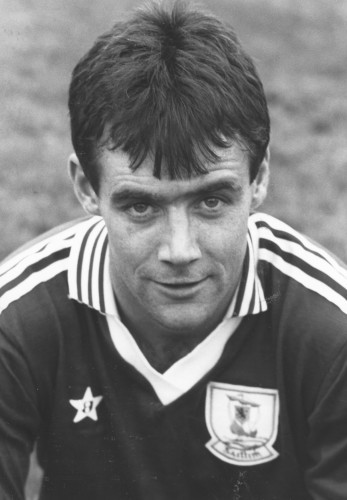 Source: Alan Betson/INPHO
10. Anthony Cunningham (St Thomas’)
Galway’s current senior hurling boss has made quite a name for himself in coaching since his playing days.
He enjoyed huge football success with Roscommon club side St Brigid’s and Garrycastle in Westmeath before guiding Galway’s U21 hurlers to All-Ireland glory in 2011.
He’s in his fourth season as the county’s senior hurling boss and hoping to mastermind a first Liam MacCarthy Cup success since 1988 on Sunday.
Source: Alan Betson/INPHO
10. Anthony Cunningham (St Thomas’)
Galway’s current senior hurling boss has made quite a name for himself in coaching since his playing days.
He enjoyed huge football success with Roscommon club side St Brigid’s and Garrycastle in Westmeath before guiding Galway’s U21 hurlers to All-Ireland glory in 2011.
He’s in his fourth season as the county’s senior hurling boss and hoping to mastermind a first Liam MacCarthy Cup success since 1988 on Sunday.
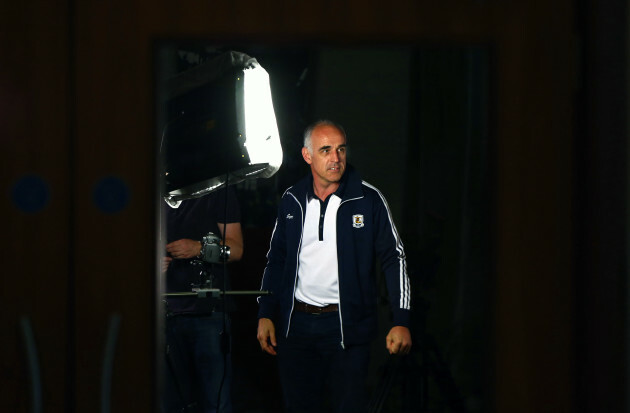 Source: Cathal Noonan/INPHO
11. Brendan Lynskey (Meelick-Eyrecourt)
Now running a restaurant in Athlone, Lynskey was a teak-tough centre forward who gave as good as he got.
Renowned as a shrewd business man with a penchant for succeeding in whatever he turns his hand to, Lynskey challenged Anthony Cunningham for the Galway senior hurling post last year.
Former Galway U21 boss Lynskey has developed a significant property portfolio in recent years, as a key leader with the Roebuck International group.
Source: Cathal Noonan/INPHO
11. Brendan Lynskey (Meelick-Eyrecourt)
Now running a restaurant in Athlone, Lynskey was a teak-tough centre forward who gave as good as he got.
Renowned as a shrewd business man with a penchant for succeeding in whatever he turns his hand to, Lynskey challenged Anthony Cunningham for the Galway senior hurling post last year.
Former Galway U21 boss Lynskey has developed a significant property portfolio in recent years, as a key leader with the Roebuck International group.
 Source: James Crombie/INPHO
12. Martin Naughton (Turloughmore)
Naughton is now self-employed with his own oil business in Claregalway.
Former manager of the Turloughmore senior club, Naughton is also a keen golfer and has played in the prestigious Pierce Purcell shield.
Naughton retired from intercounty hurling in 1992 after suffering cruciate knee ligament damage.
Source: James Crombie/INPHO
12. Martin Naughton (Turloughmore)
Naughton is now self-employed with his own oil business in Claregalway.
Former manager of the Turloughmore senior club, Naughton is also a keen golfer and has played in the prestigious Pierce Purcell shield.
Naughton retired from intercounty hurling in 1992 after suffering cruciate knee ligament damage.
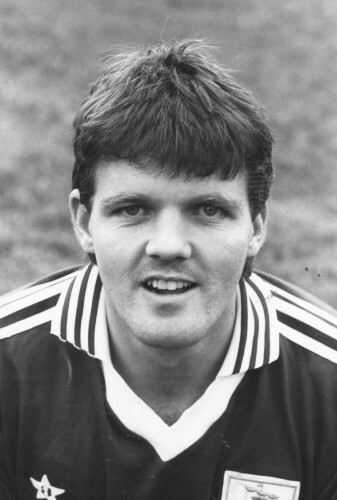 Source: Billy Stickland/INPHO
13. Michael McGrath (Sarsfields)
The man known as ‘Hopper’ scored two points against Tipperary in the 1988 decider.
Currently manager of the Sarsfields senior camogie team, he has three daughters involved in the county set-up – Niamh, Clodagh and Orlaith.
Michael’s wife Geraldine is a former Ireland hockey international and chair of the Galway camogie board.
Source: Billy Stickland/INPHO
13. Michael McGrath (Sarsfields)
The man known as ‘Hopper’ scored two points against Tipperary in the 1988 decider.
Currently manager of the Sarsfields senior camogie team, he has three daughters involved in the county set-up – Niamh, Clodagh and Orlaith.
Michael’s wife Geraldine is a former Ireland hockey international and chair of the Galway camogie board.
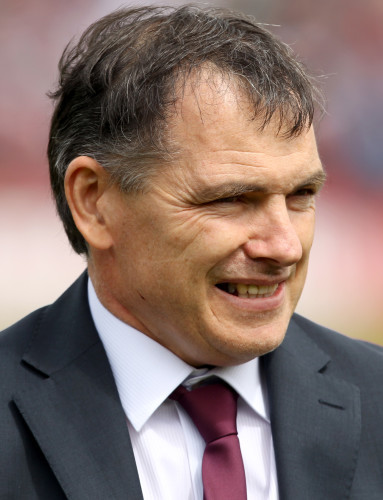 Source: James Crombie/INPHO
14. Joe Cooney (Sarsfields)
Cooney is renowned as one of Galway’s all-time greats and he established the ‘Joe Cooney school of hurling’ in later years.
Now helping to maintain a school in Loughrea, Cooney has also enjoyed stints as coach of his local club Sarsfields.
Cooney, also a farmer, has a huge interest in Sunday’s All-Ireland finals, as two sons are involved.
Kevin is a sub on the Galway minor hurling panel and Joseph likewise for the seniors.
Joe’s daughter, Maria, is a key member of the county’s senior camogie team.
Source: James Crombie/INPHO
14. Joe Cooney (Sarsfields)
Cooney is renowned as one of Galway’s all-time greats and he established the ‘Joe Cooney school of hurling’ in later years.
Now helping to maintain a school in Loughrea, Cooney has also enjoyed stints as coach of his local club Sarsfields.
Cooney, also a farmer, has a huge interest in Sunday’s All-Ireland finals, as two sons are involved.
Kevin is a sub on the Galway minor hurling panel and Joseph likewise for the seniors.
Joe’s daughter, Maria, is a key member of the county’s senior camogie team.
 Source: Billy Stickland/INPHO
15. Éanna Ryan (Killimordaly)
Ryan was told that he might never play hurling again after suffering a serious head injury in a club game against Turloughmore in 1990.
But eight years later, he was back as a late sub for Killimordaly against Kinvara.
Ryan’s plight shocked the hurling world at the time but he’s made a good recovery and is currently working as a rep for a drinks company.
He’s also involved in underage coaching with Clarinbridge.
Source: Billy Stickland/INPHO
15. Éanna Ryan (Killimordaly)
Ryan was told that he might never play hurling again after suffering a serious head injury in a club game against Turloughmore in 1990.
But eight years later, he was back as a late sub for Killimordaly against Kinvara.
Ryan’s plight shocked the hurling world at the time but he’s made a good recovery and is currently working as a rep for a drinks company.
He’s also involved in underage coaching with Clarinbridge.
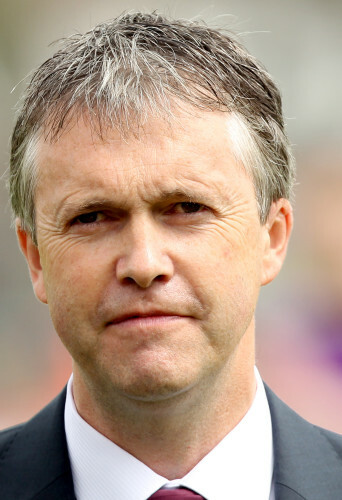 Source: James Crombie/INPHO
Source: James Crombie/INPHO
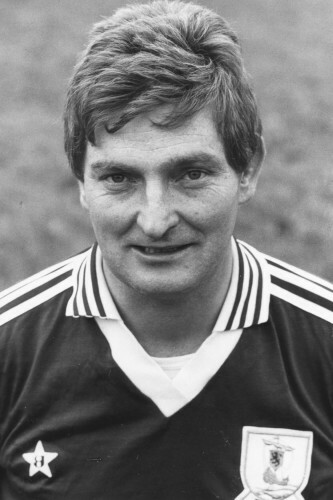 Source: Alan Betson/INPHO
Tony Kilkenny (Kiltormer)
Brother of corner back Ollie, Tony came on as a sub for Naughton with 13 minutes left.
A retired male nurse, Tony is now running a successful bus hire company.
Source: Alan Betson/INPHO
Tony Kilkenny (Kiltormer)
Brother of corner back Ollie, Tony came on as a sub for Naughton with 13 minutes left.
A retired male nurse, Tony is now running a successful bus hire company.
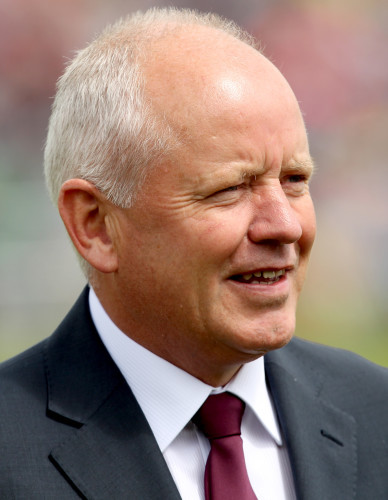 Source: James Crombie/INPHO
Gerry Burke (Turloughmore)
In 1986, Burke scored all of Turloughmore’s nine points in the All-Ireland club semi-final defeat to eventual winners Kilruane MacDonagh’s of Tipperary.
He has been involved in coaching at club level with Turloughmore in more recent times.
Source: James Crombie/INPHO
Gerry Burke (Turloughmore)
In 1986, Burke scored all of Turloughmore’s nine points in the All-Ireland club semi-final defeat to eventual winners Kilruane MacDonagh’s of Tipperary.
He has been involved in coaching at club level with Turloughmore in more recent times.
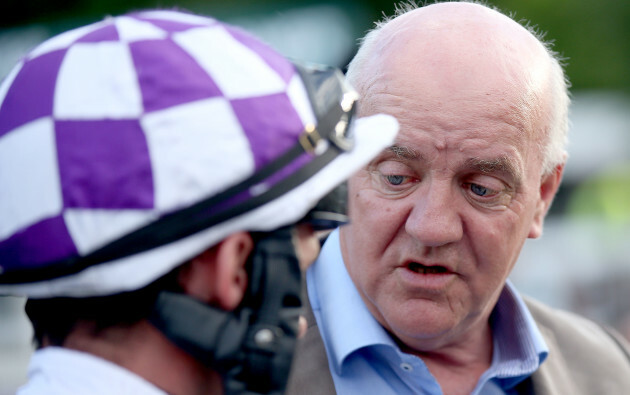 Source: James Crombie/INPHO
Phelim Murphy
Known as ‘the Godfather of Galway hurling’, Murphy was mastermind of the Turloughmore teams that dominated the county senior hurling championship in the 1960s.
He was club chairman and manager simultaneously when Turloughmore won six-in-a-row from 1961-66.
Murphy was selector in 1972 when Galway won the All-Ireland U21 hurling title and he went on to link up with Farrell from 1981 on.
Murphy served as secretary of the Galway hurling board from 1982-2004, and he was also Connacht chairman and vice-chairman during a lengthy administrative career.
Source: James Crombie/INPHO
Phelim Murphy
Known as ‘the Godfather of Galway hurling’, Murphy was mastermind of the Turloughmore teams that dominated the county senior hurling championship in the 1960s.
He was club chairman and manager simultaneously when Turloughmore won six-in-a-row from 1961-66.
Murphy was selector in 1972 when Galway won the All-Ireland U21 hurling title and he went on to link up with Farrell from 1981 on.
Murphy served as secretary of the Galway hurling board from 1982-2004, and he was also Connacht chairman and vice-chairman during a lengthy administrative career.
 Source: © Billy Stickland/INPHO
Bernie O’Connor
Another former Galway boss, O’Connor went on to become a successful administrator at board level.
O’Connor also hurled for Galway and he retains a keen interest in his local club Oranmore
Source: © Billy Stickland/INPHO
Bernie O’Connor
Another former Galway boss, O’Connor went on to become a successful administrator at board level.
O’Connor also hurled for Galway and he retains a keen interest in his local club Oranmore

| Period | Sponsor(s) | Name |
|---|---|---|
| 1887−1994 | No main sponsor | The All-Ireland Championship |
| 1995−2007 | The Guinness Hurling Championship | |
| 2008−2009 | The GAA Hurling All-Ireland Championship | |
| 2010−2012 | The GAA Hurling All-Ireland Championship | |
| 2013−2016 | The GAA Hurling All-Ireland Championship | |
| 2017−2019 | The GAA Hurling All-Ireland Championship |
